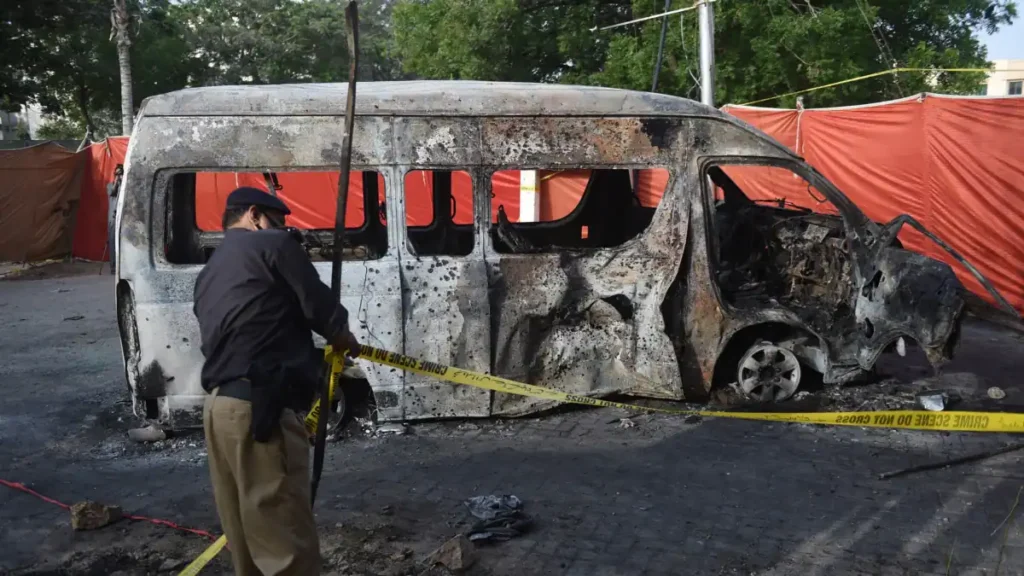After China deployed the J-20 Mighty Dragons in a cross-strait show of force against Taiwan, the stealthy Chinese fighter appeared just 150 kilometers from the Indian border, also known as the Line of Actual Control (LAC). A set of satellite images obtained by ‘All Source Analysis’ shows at least six J-20 fighter jets stationed at the Chinese Shigatse Air Base, located just over 150 kilometers from the LAC. The satellite imagery appears to have been obtained by Planet Labs on May 27. In addition to the six J-20 stealthy fighters, at least eight J-10 aircraft and one KJ-500 Airborne early warning and control aircraft can also be seen parked at the air base in Shigatse, which is close to the eastern sector of the LAC.
Analysis of imagery collected over Shigatse Air Base in China shows the deployment of six likely J-20 stealth fighter aircraft near the Indian border. https://t.co/epfzHD3Daa#GEOINT #China #Shigatse #J20 pic.twitter.com/hyijF3T1ao
— AllSource Analysis (@AllSourceA) May 29, 2024
The airport is one of the highest in the world and functions as a dual-use airport. At the time of writing this report, the Indian military had not taken cognizance of the deployment. However, experts noted on social media that the Indian side remained aware of these deployments, which have not been uncommon since the 2020 stand-off began.
The deployment of the J-20s at Shigatse is significant. It is located less than 300 kilometers from Hasimara Air Base in West Bengal, home to the Rafale fighter jets of the Indian Air Force (IAF). Indian military bloggers expressed alarm over the deployment, highlighting the gap between the two air powers. India, unlike China, does not have a fifth-generation aircraft in its arsenal. The IAF has strategically deployed the Rafales in Hasimara so that they can be quickly scrambled in case of a threat at the border with China.
The Rafales are believed to be one of the strongest systems in the IAF’s inventory against the Chinese threat that refuses to die down. Air Chief Marshal RKS Bhadauria, former Indian Air Force (IAF) chief, recently pointed out that China deployed five times more J-20 stealth fighters than India’s then newly-procured Rafale jets during the standoff.

Although this is not the first time J-20s have appeared at an airbase near the Indian border, it has been flagged as one of the biggest deployments in recent memory. The aircraft were photographed on multiple occasions at the Hotan airbase in Xinjiang.
The Chinese PLA Air Force first deployed J-20 jets close to Indian territory at the height of the conflict in 2020. According to government sources, the J-20s were reportedly spotted flying from the Hotan airbase in China’s Xinjiang province, where strategic bombers and other fighters were stationed. This move came in response to the perceived threat posed by India’s Rafale jets, which had begun conducting night flying exercises at the time.
In June 2022, for instance, the People’s Liberation Army Air Force (PLAAF) stationed around two dozen frontline combat aircraft at Hotan, including the J-11 and the J-20 stealth fighter jets, as previously reported by EurAsian Times. The J-20s have become synonymous with the Chinese assertion of power. This was on display recently when the PLA Eastern Command published a video of J-20s in action, emphasizing the aircraft’s “cross-strait” lethality.
The video was published right after the unprecedented military drills launched by the PLA as “punishment” for new Taiwan President Lai Ching-te’s inaugural speech on May 20, in which he reiterated his commitment to Taiwanese independence and sovereignty. China has repeatedly called the new Taiwanese President a “separatist.”
The Chinese fifth-generation stealth jets, the J-20 Mighty Dragons, are projected as major assets in any potential conflict the country may have to contest. The PLAAF has already positioned a few J-20s in all five theatre commands. By 2026, each command will have at least one to two J-20 brigades. China has recently announced that the J-20 will be modified to carry nuclear weapons. The J-20, which has nearly replaced previous PLAAF aircraft as the workhorse, is believed to have sophisticated electronics. It has sensors to help pilots make the best tactical and combat judgments. The recently released video made this clear, and it also underlined the Chinese military’s evolving—and now entrenched—belief in “intelligent-zed combat.”

